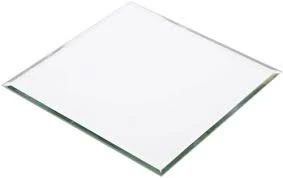

Architectural Decorative Windows A Fusion of Function and Art
Windows are often considered mere openings in a wall, allowing light and air to enter a space. However, in the realm of architecture, they transcend their basic utility, emerging as significant decorative elements that enhance the aesthetic appeal of buildings. Architectural decorative windows are not just functional features; they are artistic expressions that tell a story, showcase cultural identity, and contribute to the overall design narrative of a structure.
The Importance of Decorative Windows
Decorative windows serve several purposes. Firstly, they play a crucial role in shaping the character and style of a building. The choice of window design, materials, and placement can influence the overall architectural language. For example, intricate stained glass windows in Gothic cathedrals not only allow light to filter into the worship space but also narrate biblical stories through their vibrant colors and detailed imagery. Similarly, the minimalist designs of contemporary glass facades prioritize transparency and connection to the outdoors, highlighting modernity and innovation.
Historical Perspectives
Throughout history, windows have evolved from simple openings to complex artistic features. In ancient civilizations, such as Egypt and Greece, windows were often adorned with ornamental grilles or shutters, serving both decorative and practical purposes. The Romanesque and Gothic periods saw the emergence of grand stained glass windows, which were integral to the architectural grandeur of churches and cathedrals. These windows not only illuminated the interior but also served as a medium for storytelling.
The Renaissance ushered in a new era of design, where symmetry and proportion became paramount. Windows were meticulously planned to align with the overall balance of structures, often featuring decorative elements like pediments and pilasters. The Baroque period took this concept further, embracing opulence with oversized windows framed by elaborate ornamentation.
Modern Innovations

In contemporary architecture, decorative windows continue to thrive. Architects are experimenting with various materials, including glass, metal, and wood, to create unique window designs that push the boundaries of traditional architecture. Large glass panels, for instance, blur the lines between indoor and outdoor spaces, making the surrounding landscape an integral part of the living environment.
Furthermore, technological advancements have allowed for innovative window designs that enhance energy efficiency while maintaining aesthetic appeal. For instance, triple-glazed windows provide superior insulation without compromising on style, allowing homeowners to enjoy natural light and views without sacrificing comfort.
Cultural Expressions
Decorative windows also reflect cultural identities and historical contexts. In regions like the Middle East, ornate windows known as “mashrabiya” showcase intricate wood latticework that provides privacy while allowing air to circulate. Similarly, in Asian architecture, windows are often framed with delicate carvings and versatile paper screens, embodying a harmonious relationship with nature.
In the Western world, Art Nouveau movement brought about a resurgence of decorative elements, emphasizing flowing lines and organic forms in window designs. This was further developed by the Arts and Crafts movement, which advocated for handcrafted, artisanal quality in all architectural elements, including windows.
Conclusion
Architectural decorative windows represent a harmonious blend of art and function, transcending their primary role as an architectural necessity. They bring light into spaces, frame views of the outside world, and serve as pivotal elements in the storytelling of a building's design narrative. As we look to the future of architecture, it is essential to recognize the importance of these decorative features, for they are not just windows—they are portals to understanding our cultural heritage and aspirations. From the grandeur of historical landmarks to the innovative designs of modern architecture, decorative windows continue to inspire, enchant, and elevate our built environments.
Through thoughtful design and creative expression, architectural decorative windows will remain a vital part of our spaces, reminding us of the beauty that lies in the intersection of functionality and artistry.